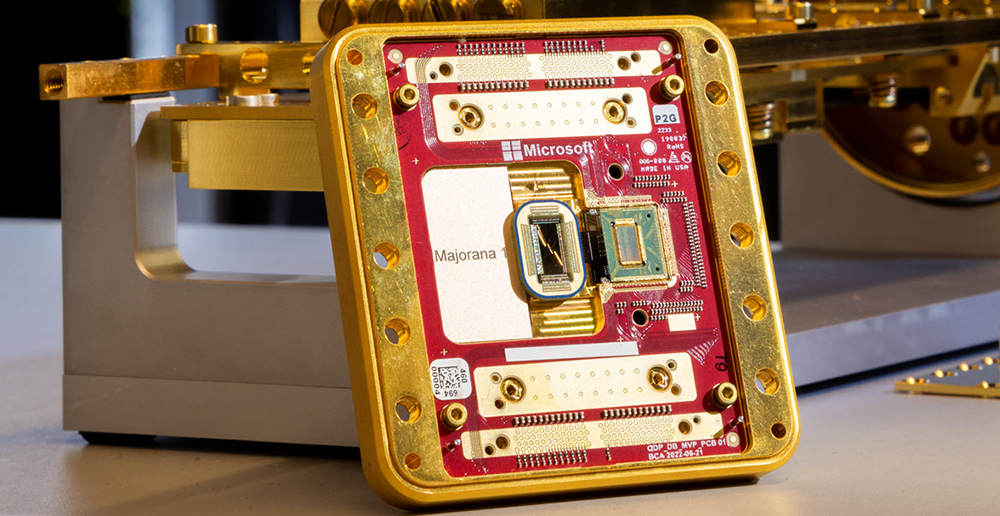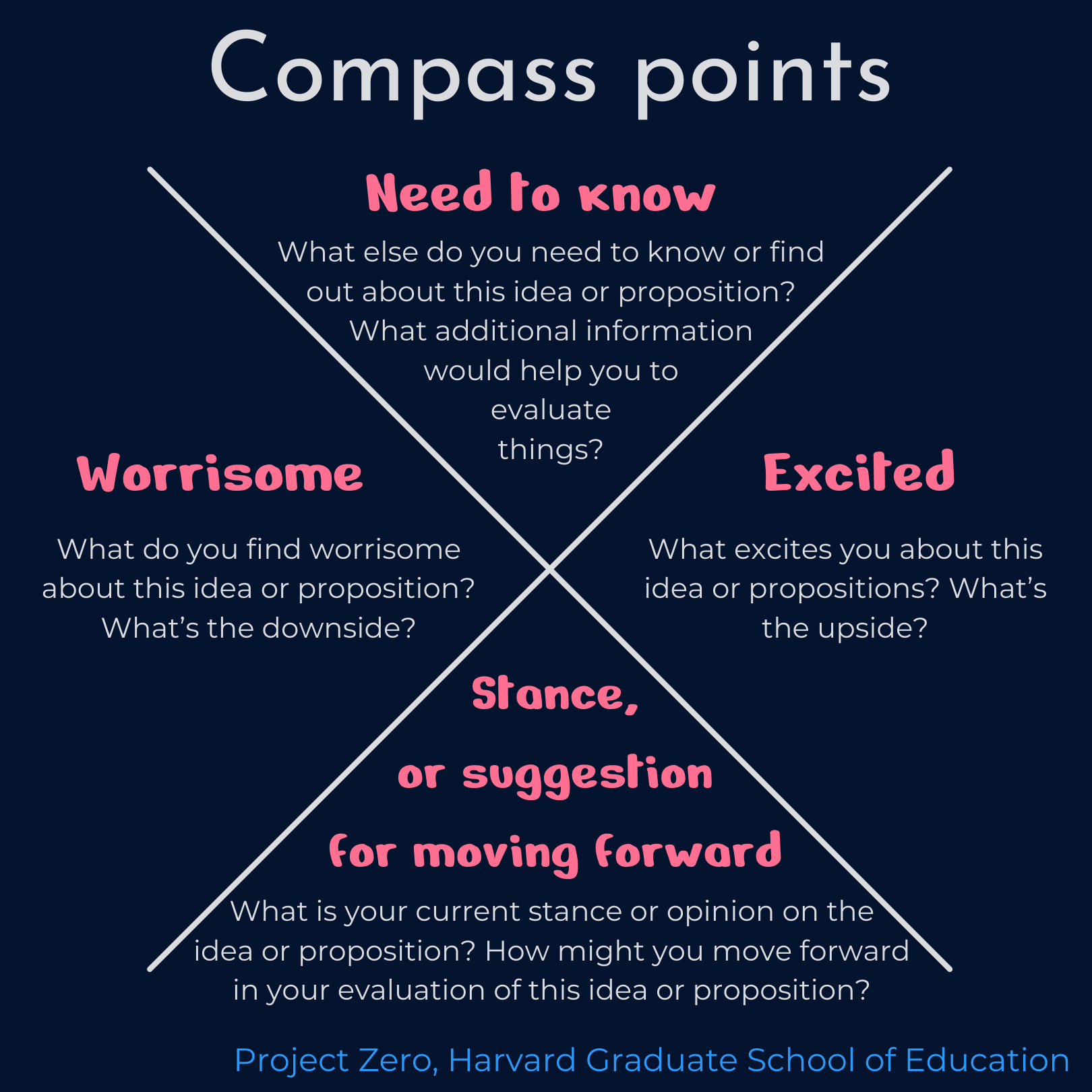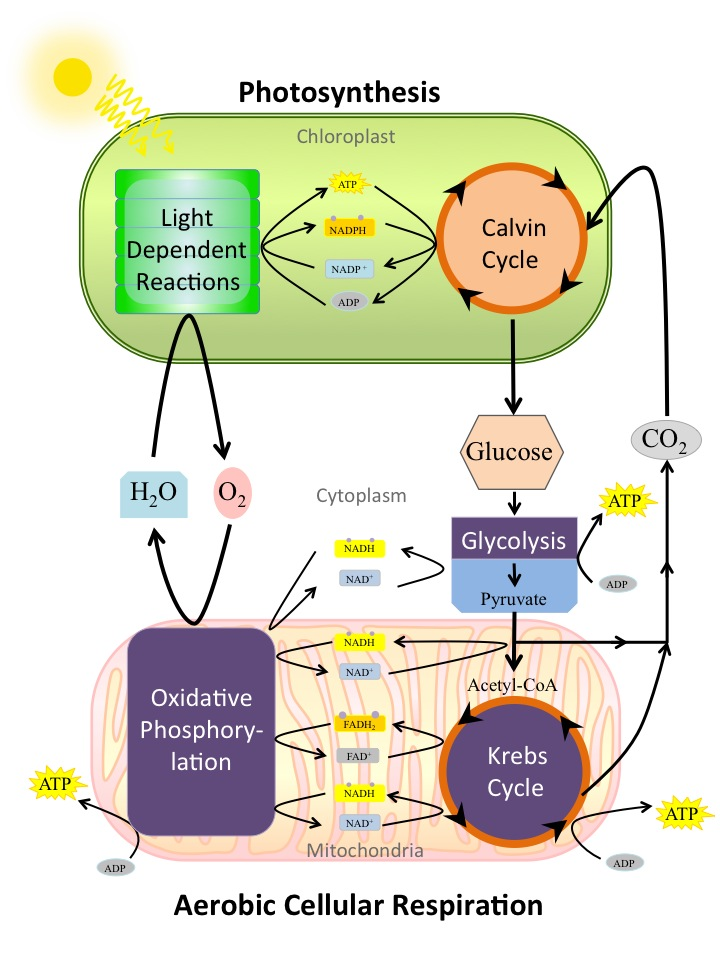A topological qubit, recently pioneered by Microsoft, promises to revolutionize the landscape of quantum computing. Unlike traditional qubits that rely on fragile states, the topological qubit leverages the unique properties of certain materials to maintain stability, which is crucial for reliable computation. This groundbreaking advancement, led by researcher Chetan Nayak, seeks to harness the principles of superposition in quantum mechanics while minimizing error rates. By creating a solid foundation for qubit technology, Microsoft aims to significantly enhance the performance of quantum systems, ultimately driving us closer to solving complex problems that conventional supercomputers struggle with. As we stand on the brink of ultrafast computing, the implications of topological qubits are vast, heralding a new era where stable qubit technology unlocks unprecedented computational powers.
Often referred to as a new breed of qubit, the topological qubit marks a significant shift in our approach to quantum information processing. This innovative type of quantum bit, developed by leading minds in the field, particularly at Microsoft, seeks to stabilize the delicate states that define quantum computing. By utilizing advanced materials with topological features, these qubits promise enhanced resilience against errors, a persistent challenge in the development of quantum systems. The research in this domain echoes the potential of superposition, a key element in quantum mechanics that enables bits to exist in multiple states simultaneously. As advancements like the Microsoft quantum chip continue to evolve, the concept of a topological qubit stands as a beacon of hope for achieving reliable and efficient quantum computations.
Understanding Topological Qubits in Quantum Computing
Topological qubits represent a groundbreaking development in the field of quantum computing, significantly enhancing the stability and reliability of quantum systems. Unlike traditional qubits, which can be susceptible to environmental noise, topological qubits leverage the principles of topology to create states that are inherently more robust. This increased stability is fundamental for achieving error correction—a crucial aspect in quantum error correction that allows quantum computers to maintain coherence in computations over extended periods. Chetan Nayak and his team at Microsoft have been instrumental in pioneering this technology, ensuring that future quantum computers can handle complex computations without collapsing under the influence of external conditions.
The unique characteristics of topological qubits derive from their reliance on non-local properties of quantum systems. In essence, while traditional qubits are highly influenced by their immediate environment, topological qubits maintain their integrity across broader spatial configurations. This can be explained through the concept of superposition in quantum mechanics, where information can exist in multiple states simultaneously. By harnessing this capability within a topological structure, Microsoft’s qubits promise not only enhanced performance but a path towards scalable quantum computers that could revolutionize a variety of fields such as cryptography, materials science, and complex system simulations.
The Role of Superposition in Quantum Computing
At the core of quantum computing is the principle of superposition, allowing qubits to represent both 0 and 1 simultaneously, unlike classical bits which can only represent one state at a time. This dual-state capability provides quantum computers with their extraordinary computational power, enabling them to solve tasks that are currently intractable for classical systems. As qubits scale from hundreds to millions, the implications of superposition become increasingly profound, allowing for deeper explorations into complex materials and phenomena that mirror nature’s own quantum mechanical foundations.
Understanding superposition is essential for grasping the challenges and advancements in quantum error correction. The fragile nature of qubits means that maintaining their superposition state is critical for preserving the fidelity of computations. Chetan Nayak’s exploration into topological qubits reflects an innovative approach to this issue, aiming to create quantum states that resist decoherence. By developing a stable qubit technology that minimizes the risk of collapse into classical states, researchers can leverage superposition’s full potential, paving the way for breakthroughs in quantum algorithms and technologies that could outperform even the most advanced classical supercomputers.
The Promise of Microsoft’s Quantum Chip
Microsoft’s latest announcement regarding its topological qubit technology has sent ripples through the quantum computing landscape, signifying a step toward practical quantum chips that could fulfill the promises of quantum computing. The new quantum chip, developed under the guidance of Chetan Nayak, demonstrates the advantages of using topological qubits, particularly in terms of producing a highly stable and scalable computing system. This innovation aims to surpass the limitations of existing systems and is designed to address some of the most fundamental problems faced by contemporary quantum computing research.
The vision for Microsoft’s quantum chip extends beyond mere computational speed; it aims to tackle complex scientific challenges, such as the simulation of materials and chemical processes. By achieving a high number of qubits operating in a stable configuration, future iterations of these quantum chips could solve problems previously thought impossible, revolutionizing industries from drug discovery to advanced materials engineering. As Microsoft embarks on ambitious projects with organizations like DARPA, the potential applications of their quantum chip signal a remarkable shift in how we approach complex problem-solving in quantum mechanics.
Challenges in Developing Qubits: Lessons from the Frontline
Developing stable qubits is akin to navigating uncharted waters, as pioneers like Chetan Nayak have discovered throughout their research journey. The hurdles faced during the creation of topological qubits mirror historical challenges encountered during the early days of semiconductor physics. Researchers must grapple with material properties, managing impurities, and refining experimental techniques to achieve desired results. The innovative spirit that fueled early computing can be felt in the laboratories today, as scientists navigate similar uncertainties but within the field of quantum mechanics.
Moreover, the exploration of topological qubits involves substantial trial and error, especially in material selection and synthesis methods. As Nayak notes, successfully articulating the core challenges plays a pivotal role in identifying effective solutions. This clarity helps researchers tailor their approaches, focusing on key attributes essential for stabilizing quantum states. The pursuit of topological qubits highlights the importance of interdisciplinary approaches, combining elements of physics, materials science, and engineering to push the boundaries of what is possible in quantum technology.
Future Directions for Quantum Computing
The future of quantum computing stands on the brink of transformation as more researchers worldwide delve into the potential of topological qubits. The ultimate goal to create a million-qubit quantum computer is not merely an ambitious dream but a target that tech giants like Microsoft aim to achieve in the near future. By enhancing the coherence time and reducing error rates, these advances could lead to quantum systems that operate efficiently, providing answers to intricate scientific questions that have long been elusive.
Collaboration among research institutions, industry experts, and government agencies will be critical in realizing the full potential of quantum computing. By sharing insights and breakthroughs, the quantum community can navigate the complexities of materials engineering and optimization. Chetan Nayak’s initiatives at Microsoft exemplify the kind of pioneering spirit needed to bring quantum computing from concept to reality, addressing significant challenges in physics and materials science that could yield revolutionary outcomes.
Incorporating Quantum Error Correction Techniques
An essential focus for advancing the reliability of quantum computing is the integration of robust quantum error correction techniques. As highlighted by researchers, including Chetan Nayak, the approach to creating stable qubits inherently ties into how we can address errors that occur during computation. Traditional qubits may falter due to unwanted interactions with their environment, leading to the collapse of their vital superposition state. Tailoring topological qubits to leverage their unique properties may provide a pathway towards achieving effective quantum error correction without adding significant overhead.
The development of topological qubits allows scientists to explore innovative methods of encoding information that could be less prone to error. This could involve rethinking the current designs of quantum circuits and employing mathematical frameworks that optimize their performance. As experimental work progresses, the increased stability afforded by topological structures will enable researchers to refine quantum algorithms and error correction protocols, ultimately facilitating a more seamless operation of quantum computers and broadening their applicability across technologies.
The Intersection of Physics and Technology in Quantum Research
The realm of quantum computing beautifully marries theoretical physics with cutting-edge technology, creating a landscape where breakthroughs in one field can dramatically impact the other. Chetan Nayak’s contributions to the design of topological qubits exemplify this intersection, showcasing how deep knowledge in quantum mechanics can inform practical applications within the tech industry. This synergy not only accelerates the pace of discovery but also shapes the trajectory of research agendas in both academic and corporate environments.
As major tech firms invest in quantum computing, the collaboration between physicists and engineers become paramount. Understanding the theoretical underpinnings of quantum states empowers engineers to develop sophisticated experimental setups that can harness these principles effectively. The questions are complex and multifaceted; however, as seen in Microsoft’s endeavors, the integration of theory and application could lead to a generation of quantum devices capable of exceptional computational feats, ready to tackle our world’s most pressing challenges.
Exploring Material Science through Quantum Computing
One of the most promising applications of quantum computing lies in its potential to revolutionize material science. With topological qubits at the forefront of this technology, researchers, including those at Microsoft led by Chetan Nayak, are poised to conduct simulations that were previously unimaginable with classical computers. Quantum computers can analyze complex material interactions at unprecedented scales, opening doors to the discovery of new materials with unique properties that could transform various industries.
An example of such advancements can be seen in the efforts to understand high-temperature superconductors—materials that have defied classical explanations. Quantum simulations can provide insights into these materials’ underlying mechanics, driving innovations that effectively address energy efficiency and storage challenges. As quantum computing evolves, the synergy between theoretical understanding and practical application in material science propels us closer to solving real-world problems through the fundamental principles of physics and the pioneering spirit of technology.
The Global Impact of Quantum Computing Innovations
The implications of breakthroughs in quantum computing extend far beyond individual companies or academic institutions; they have the potential to redefine industries on a global scale. Microsoft’s advances in developing topological qubits, guided by industry experts like Chetan Nayak, could lead to transformative applications in fields ranging from healthcare to finance. By enabling the efficient processing of complex datasets and sophisticated simulations, quantum technology holds the promise of accelerating scientific and technological advancements that benefit society as a whole.
Governments and international organizations are increasingly recognizing the strategic importance of quantum research and the need for collaboration to maximize its benefits. As countries invest in quantum research initiatives, understanding the underlying principles of quantum mechanics and leveraging them for practical applications becomes critical. This shift towards prioritizing quantum technology underscores a collective ambition to harness the potential of quantum computing for addressing critical global challenges, from climate change mitigation to cybersecurity, positioning nations on the forefront of technological innovation.
Frequently Asked Questions
What is a topological qubit and how does it improve quantum computing?
A topological qubit is a new kind of qubit that offers enhanced stability and robustness for quantum computing. Unlike traditional qubits that are sensitive to environmental noise, topological qubits are designed to be less susceptible to such disturbances, allowing them to maintain their superposition states longer. This stability is crucial for building reliable quantum computers capable of executing complex computations, differentiating Microsoft’s topological qubit technology from earlier quantum chips.
Who is Chetan Nayak and what role does he play in the development of topological qubits?
Chetan Nayak is a technical fellow at Microsoft and a professor at the University of California, Santa Barbara. He has been a leading figure in the development of topological qubits, focusing on their creation to enhance stability in quantum computing. His team’s work on topological qubits aims to overcome the limitations of traditional qubits and accelerate advancements in ultrafast quantum computers.
How does Microsoft’s topological qubit relate to superposition in quantum mechanics?
Microsoft’s topological qubit exploits the principles of superposition in quantum mechanics, where a qubit can exist in multiple states simultaneously. This property allows quantum computers to perform numerous calculations at once, significantly enhancing their computational power. The stability offered by topological qubits facilitates the preservation of superposition, making them ideal for complex quantum computing tasks.
What materials are used to create the topological qubit developed by Microsoft?
Microsoft’s topological qubit is made from a combination of indium arsenide and aluminum, which acts as a superconductor at very low temperatures. These materials are crucial for maintaining the necessary conditions for topological qubits to function effectively, enabling the robust performance required for advanced quantum computing.
What are the potential applications of topological qubits in quantum computing?
Topological qubits have the potential to revolutionize a variety of fields through quantum computing applications. Their enhanced stability and robustness allow for efficient simulations in material science, chemistry, and complex problem-solving scenarios. This could lead to breakthroughs in drug discovery, optimization problems, and advancements in artificial intelligence, far surpassing classical computing capabilities.
What are the main challenges faced in developing topological qubits?
Developing topological qubits involves significant challenges, including identifying suitable materials that can exhibit the necessary quantum states and managing errors that may arise during quantum computations. Ensuring the stability and performance of these qubits in practical applications requires extensive research and development, as seen in the long-term project led by Chetan Nayak and his team at Microsoft.
How soon can we expect to see practical implementations of topological qubits in quantum computers?
While practical implementations of topological qubits are still in development, Microsoft aims to produce a million-qubit quantum computer in the near future. Current prototypes and ongoing research signify significant strides toward this goal, but widespread availability of topological qubits in commercial quantum computers may take a few more years as the technology continues to mature.
What is the significance of the collaboration with DARPA in the development of topological qubits?
The collaboration with DARPA is significant as it provides funding and support for advanced research and development of topological qubits. This partnership aims to overcome technical challenges associated with quantum computing and accelerate the timeline for creating practical, fault-tolerant quantum computers, fundamental for addressing complex scientific and engineering problems.
How do topological qubits compare to traditional quantum chips produced by companies like Google?
Topological qubits differ from traditional quantum chips in their approach to error correction and stability. While traditional quantum chips are often sensitive to environmental noise and errors, topological qubits are designed to be more robust, theoretically allowing for longer coherence times and greater reliability. This fundamental difference positions topological qubits as a promising alternative for future quantum computing systems.
What role does quantum error correction play in the functioning of topological qubits?
Quantum error correction is crucial for the functioning of topological qubits as it aims to maintain the integrity of the qubit’s quantum states over time, even in the presence of errors. By implementing effective error correction strategies, topological qubits can leverage their inherent stability and achieve higher fault tolerance, thus paving the way for more reliable quantum computing applications.
| Key Area | Details |
|---|---|
| Topological Qubit | A new type of qubit developed by Microsoft that promises improved stability and robustness for quantum computing. |
| Composition | Made from indium arsenide and aluminum, acting as a superconductor at very low temperatures. |
| Unique Properties | Incorporates a topological structure which provides stability to quantum states and reduces the need for error correction. |
| Quantum Computing Advantage | Can potentially solve complex simulations in material science and chemistry much faster than current supercomputers. |
| Research and Development | Nearly two decades of research led by Chetan Nayak with a focus on overcoming the challenges of developing stable qubits. |
| Goal | To build a million-qubit quantum computer capable of tackling significant challenges in various fields. |
Summary
Topological qubit represents a groundbreaking advancement in the field of quantum computing, as developed by Microsoft. By leveraging a unique topological structure, this new qubit aims to provide unprecedented stability compared to traditional qubits. This means that the topological qubit could significantly enhance the speed and efficiency of quantum computers, allowing them to tackle complex and demanding computational tasks much more effectively than conventional supercomputers. As researchers like Chetan Nayak and his team continue to refine this technology, the dream of a million-qubit quantum computer is increasingly within reach, promising a new era in computational capabilities.




